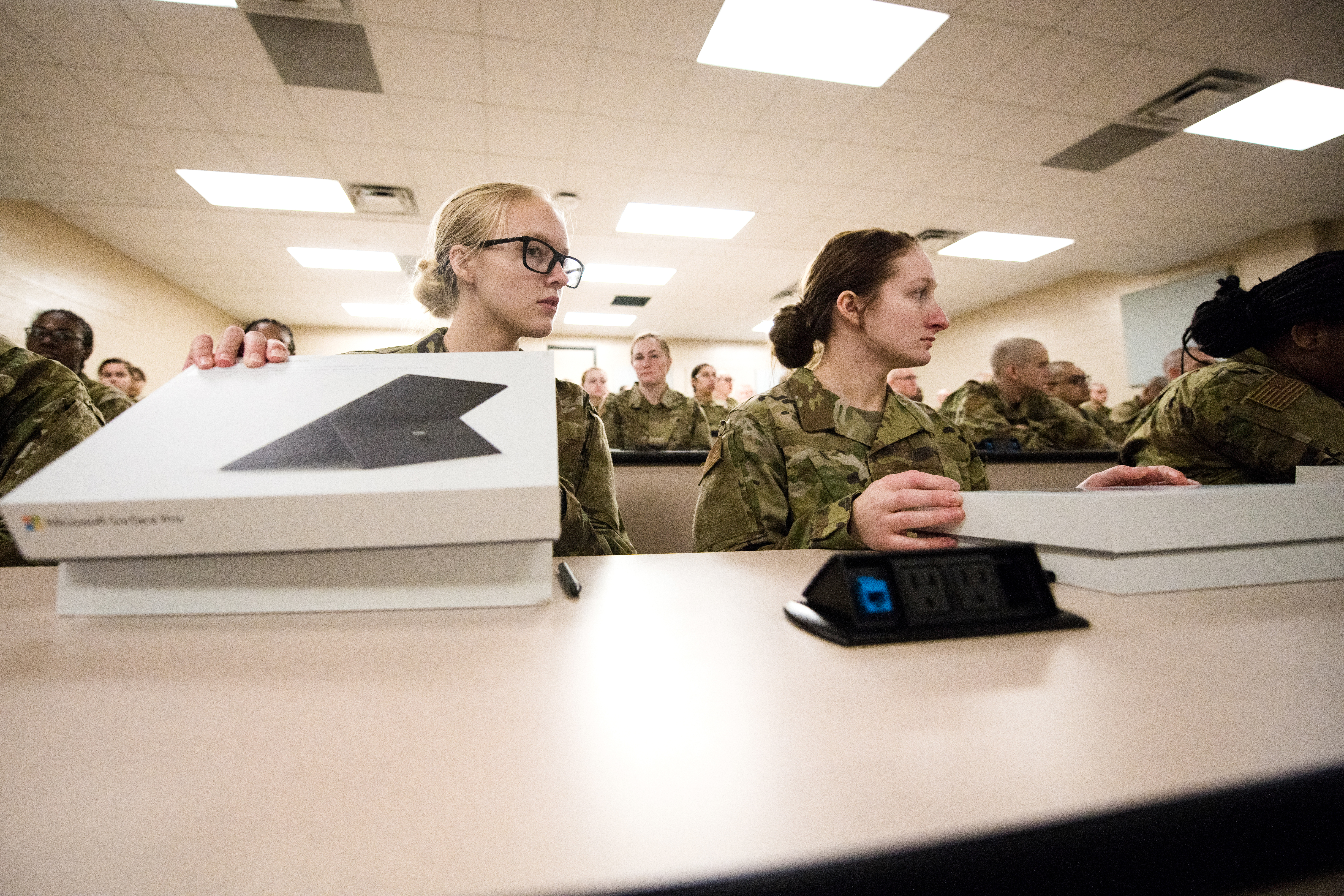Hubbard Radio Washington DC, LLC. All rights reserved. This website is not intended for users located within the European Economic Area.
Mobile, telework create potential savings, increase productivity at agencies
Emerging technologies like cloud, wireless access and virtualization are making telework an easy -- and economic -- solution for some agencies.
wfedstaff | April 17, 2015 5:51 pm
Few areas show more clearly how emerging technologies are changing the federal office than telework. Wireless access, portable devices and data storage in the cloud are allowing more feds the opportunity to do their jobs from remote locations.
But with fewer feds needing office space, agencies have to come up with new strategies to maintain the security of their systems and manage their offsite workforce, while keeping an eye on their IT budgets.
Brian McGrath, chief information officer at the U.S. Census Bureau, told the Federal Drive with Tom Temin and Emily Kopp Thursday his agency embarked on an aggressive campaign to rationalize its field organization, cutting its regional offices from 12 to six.
“Key to the success of that initiative was obviously technology and our ability to support employees doing vital work for the bureau using personally owned equipment and out of their homes,” he said. “We went forward with a virtual desktop infrastructure [VDI] solution from our private cloud that has allowed at this point 5,000 employees to work from their home, not requiring equipment from the government and not requiring formal office space to do that job.”
McGrath spoke about the changes going on at the Census Bureau as part of Federal News Radio’s special series, A New Era in Technology.
Census employees working remotely can access all of the data and systems they need to do their jobs. These employees are a combination of supervisory staff in the field organization and those employees taking part in Census’ telework initiative at its headquarters in Suitland, Md., and other locations across the country.
“We have aggressively embraced telework,” McGrath said. “Again, through VDI, we’re allowing our vital employees to access our systems and data from home so that they can maximize their efficiency.”
To make that happen, the bureau conducted an extensive IT security evaluation.
“Paramount to us is to ensure that access to the systems that we have and the data that we capture is secure and cannot be compromised in any way,” McGrath said. “So, security was a key ingrediant to the project.”
Census’ approach to security is focusing on the access layer rather than the endpoint.
“At the point where you access our infrastructure and systems, we’ve baked a very robust security model in as well as ensuring that the data in transit is secure,” he said. “So, really, embracing mobility, we’re allowing folks to use those devices which they are most comfortable and confident in using; therefore, we believe that improves productivity, but at the same time, certainly not sacrificing security.”
Making telework work for employees and the agency
McGrath admitted it was a big concern for him to support telework, but to do so in a way that made sense from a budgetary perspective.
“If we took a traditional model of having to supply tens of thousands of laptops and building out all the infrastructure to support that endpoint, it would’ve been a significant cost to the Bureau,” he said. “And in the end, it would’ve minimized the number of employees who had the opportunity to telework. So, the strategy was to try to leverage new and emerging technology, maximize the opportunity for telework, but again, not compromising our security posture.”
As mobile technology becomes more prevalent, people become more comfortable using their own devices. Agencies can take advantage of that and saving money by facilitating a “bring-your-own-device” strategy.
“We also find that the adoption model is much more positive if you’re using a device that you use day-in and day-out, and a device that you’re very comfortable with,” McGrath said. “So rather than us deploying a device and then having the requirement to provide exhaustive training on how to use a device and access the systems, if we can leverage the device that an employee already owns and is already comfortable with and we only have to train them on accessing the systems and our policies and procedures for ensuring that our data remains secure, we see that that has a positive impact on productivity.”
Despite its benefits, an office strategy that takes advantage of mobile, wireless technology, virtualization and cloud does present new challenges for an agency. McGrath said the delivery
“Now that we’re working in a highly telework environment, it’s a much different model, where traditional meetings where everyone would be sitting in the room looking at each other, that’s not where we are today and it’s not where we’re headed,” McGrath said. “So, it does require some adjustment and how we engage and function as an organization. But, I think in the long run, having that opportunity to support telework and mobility will dramatically increase our productivity.”
Saving space and saving money
George Jakabcin, the CIO at the Treasury Inspector General for Tax Administration, told In Depth with Francis Rose Thursday that his agency adopted a telework program back in 2003. Now, more than 87 percent of TIGTA’s workforce is telework authorized.
“At any given point in time on any given day of the week, well over 50 percent of our workforce is teleworking, as opposed to being in physical office space that we control,” he said. “That has yielded a tremendous amount of benefits for us, not only in terms of the space issues, but also in terms of our mobility and our ability to respond.”
In January 2012, TIGTA began to upgrade its systems to better handle new mobile requirements.
“Everyone from the lowliest low-performer right up through the IG has now got a brand new shiny laptop, as of a year ago,” Jakabcin said. “Windows 7 platform, all new OfficeSuite, the whole nine yards. Incorporated in that device, of course, was a [Personal Identity Verification] card reader, thinking ahead to the HSPD-12, PIV-required scenario.””
TIGTA reduced its lease cost on its hardware by almost $100,000 when it replaced its laptops.
“So we got better laptops, more modern, faster, greater capablity, greater capacity than we had before for less money,” Jakabcin said. “Moore’s Law working to your advantage.”
The Census Bureau does not provide equipment for teleworking employees. It determined employees preferred working on their own devices at home. As long as those employees owned the necessary equipment to access the bureau’s systems remotely — through a laptop or desktop computer — and that they had Internet connectivity, they were telework eligible.
But not all employees telework and the Census Bureau has started looking at how it could take advantage of some of the smart office design strategies the General Services Administration has been touting.
“We’ve reached out and had a couple of meetings with GSA to talk about their new, next generation office space that they have downtown and actually have a number of meetings and initiatives underway looking at a hoteling strategy for us here at the bureau,” McGrath said.
MORE FROM THE SPECIAL REPORT, A NEW ERA OF TECHNOLOGY:
Demand for data-driven models supplies agencies with decision making power
Smart design can make federal offices more productive places to work
Copyright © 2024 Federal News Network. All rights reserved. This website is not intended for users located within the European Economic Area.




